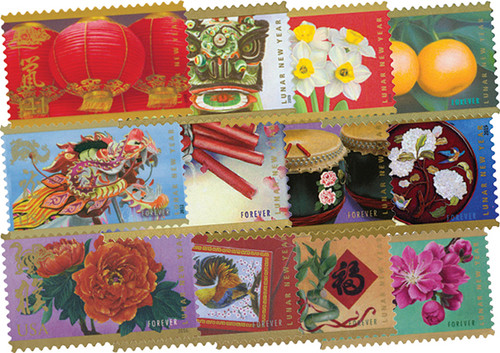
# 4221/5340 - 2008-19 Chinese Lunar New Year Collection, Mint, Set of 12 Stamps
Get the Complete 2008-2019 Lunar New Year Series
In 2008, the USPS inaugurated it’s second set of stamps honoring the Chinese Lunar New Year. This is your chance to get all 12 single stamps. The stamps feature traditional objects often seen at Lunar New Year Celebrations – paper lanterns, kumquats, dragons, ceremonial drums, and more. They also include paper-cut style depictions of each year’s animal as well as Chinese calligraphy.
Add all 12 of these bold, festive Lunar New Year stamps to your collection today. You’ll save time and money.
Get the Complete 2008-2019 Lunar New Year Series
In 2008, the USPS inaugurated it’s second set of stamps honoring the Chinese Lunar New Year. This is your chance to get all 12 single stamps. The stamps feature traditional objects often seen at Lunar New Year Celebrations – paper lanterns, kumquats, dragons, ceremonial drums, and more. They also include paper-cut style depictions of each year’s animal as well as Chinese calligraphy.
Add all 12 of these bold, festive Lunar New Year stamps to your collection today. You’ll save time and money.












